- Make It Yourself Lavender Heart-Shaped Bath Bombs!
- 20 Things You Never Knew About “Down There”
- 12 Best Foods For Those Suffering From Arthritis Pain
- 12 Personal Hygiene Mistakes Almost Everyone Makes (Mom Never Told You About #4!)
- 15 Medicinal Plants And Herbs From The Cherokee People
- 12 Mind-Blowing Benefits Of Drinking Coconut Water During Pregnancy
- 12 Outstanding Winter Foods That Won’t Fatten You Up Like A Christmas Turkey
10 Everyday Foods That Can Kill You
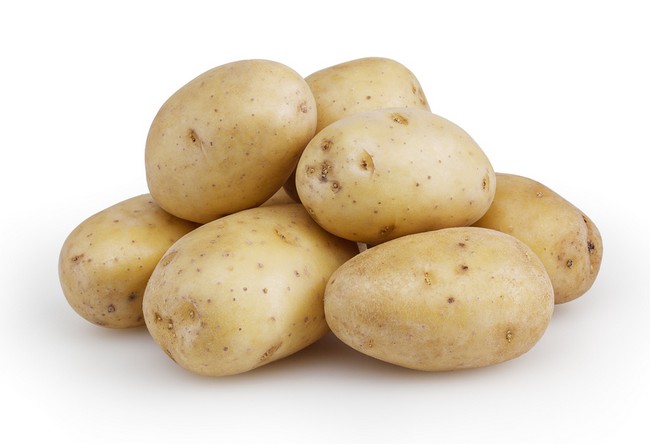
Photo credit: bigstock
Ok, so you know that eating certain foods that contain toxic chemicals can cause various chronic diseases as well as cancer, which could kill you over time, but did you know that certain very common foods could kill you in a matter of minutes?
It’s true! We don’t generally think about this, or even know about this, because we eat small amounts, but you really should know what is these foods are.
Take a look at the 10 common foods that have the potential to kill you very, very quickly.
1. Potatoes
Right about now you are giving your French fries or mashed potatoes a suspicious look, aren’t you? Well, don’t worry, they are probably safe. However, green versions of potatoes; contain a natural toxin called solanine. If you think that greenish color simply means your potato is just not quite ripe, think again. In this case, green does NOT mean go! Yes, the greenish tint on your potato is chlorophyll, but for potatoes, this also means that high concentrations of solanine are present in that French fry of the future. Solanine is a dangerous nerve toxin that is produced in any green part of the potato, that includes leaves, stems, and any green part of the potato. In fact, the leaves from potato plant are high in glycoalkaloids, another deadly poison, so do not ever eat the leaves, nor give them to animals.
Solanine develops in potatoes when they are exposed to sunlight, or extreme temperatures, either hot or cold. If you should eat the leaves or a green potato, it causes vomiting, headaches, and complete paralysis of the central nervous system. Find out also benefits of potatoes.

Photo credit: bigstock
2.Rhubarb
Ah, rhubarb! The perfect accompaniment to a strawberry pie! As long as you don’t eat any of the leaves. The leaves contain oxalic acid, which is, in essence, bleach!
During World War 1, some genius decided to offer rhubarb, including the leaves, to soldiers since the war had made access to other veggies impossible to obtain. Acute cases of severe poisoning, as well as deaths occurred, among humans as well as among goats, donkeys, and pigs who were given leaves to eat.
The toxic mechanism that makes oxalic acid work is a bit different from other organic poisons. It’s more closely related to heavy metal poisoning. Organic poisons often work at a biochemical level, such as inhibiting respiration at a cellular level but oxalic acid binds with calcium in the body, blocking the kidneys and liver from excreting it through the urine.
So, enjoy that tartness that rhubarb stalks offer to balance out the too sweet things in life, such as strawberry pie, but put those leaves in the garbage!
3. Lima Beans
You knew there was a reason you didn’t want to eat lima beans as a kid, didn’t you?! Although it’s true that all beans, including lima beans, are a valuable food. They are very high in protein, fiber, minerals, complex carbs, while remaining low in fat and cholesterol. But what you probably don’t know is that lima beans contain a protein that is toxic if they are eaten raw. It’s true.
The name of this toxin is phytohemagglutinin, or PHA for short, and it belong to a rather ordinary group of proteins called lectins. Lectins are glycoproteins that are actually in a wide variety of plant type foods, especially in seeds. In many cases they aren’t harmful because they are eaten in small amounts. But some lectins, like the ones in uncooked lima beans, can be deadly. One of the most dangerous poisons known to man, ricin, is simple a lectin that comes from the seeds of the castor bean.
The PHA in beans are is deactivated and reduced to harmless levels by as little as 10 minutes of cooking in boiling water. So, as long as you don’t eat them raw, you can make your mom happy and eat all the lima beans she puts on you plate.
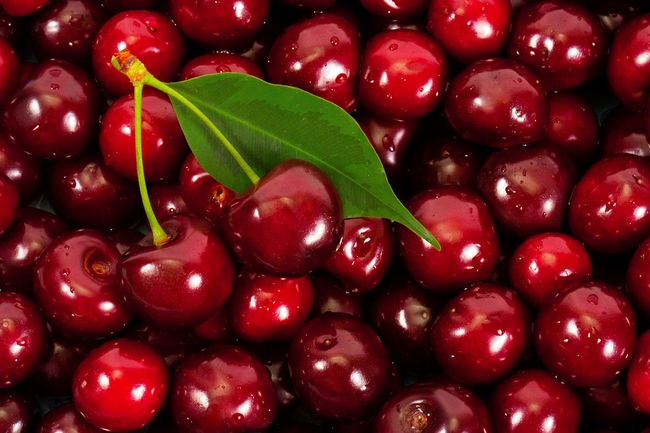
Photo credit: bigstock
4. Cherries
Have you ever gone to one of those “pick it yourself” cherry orchards with you family in the spring? Total death trap. Well, ok, not exactly, but it is true that if you are one of those people who are just too lazy to remove the pits from cherries and you figure there is no harm in swallowing them, you are wrong. Dead wrong. Cherry pits contain cyanogenic glycosides. Yes, cyanogenic, as in cyanide. It’s true that swallowing just a few won’t harm you as each individual pit does not contain enough poison to kill you outright. Chewing them, however, is another story, as this releases the poison directly into your blood stream.
Symptoms of mild poisoning would include things like confusion, vomiting, dizziness, and headaches. Consuming larger doses will lead to an increase in heart rate, blood pressure, difficulty breathing, and kidney failure, leading to convulsions, coma, and death from respiratory arrest.
So swallowing a seed or two won’t hurt you but don’t chew! Now, go enjoy that cherry pie!
5. Wild Almonds (bitter almonds)
If you ever needed a reason to buy almonds from your supermarket and not go picking them yourself in orchards, this is it, friends.
If you weren’t aware of it before, there are two types of almonds. Sweet almonds and bitter almonds. Bitter almonds, when eaten raw, are extremely poisonous. Bitter almonds contain a poison called glycoside amygdalin. After someone consumes bitter almonds, glycoside amygdalin turns into prussic acid, more commonly known as hydrogen cyanide; the same substance used in the Nazi gas chambers. Yeah. This is some serious stuff.
SEE ALSO: 12 Ways That Fried Foods Are Killing You Infographic
So if you’re walking out in the woods and see a beautiful almond tree just loaded with some luscious looking nuts, don’t assume that it’s OK to eat them. It actually takes very little of the poison in these nuts to kill you. Depending on your weight, it only takes about 100 to 200mg of cyanide to kill you within 5 to 7 minutes. That means it only takes about 2 handfuls of bitter almonds to make you drop dead.
After processing, bitter almonds can be safely eaten since all hydrogen cyanide is leached out during the heating process. It’s illegal to sell unrefined bitter almonds so if you see some for sale in your supermarket, there’s no need to freak out, they’re safe.

Photo credit: bigstock
6. Apples
You are giving that apple juice the evil eye, aren’t you? Well, the truth is, it’s unlikely that you will do yourself much harm eating an apple and swallowing a few seeds but not much more than that. The enzymes in your body have this nasty tendency to change the compounds in seeds into cyanide. This is the most likely reason you never heard much about good old Johnny Appleseed after he plants a few hundred trees.
Apple seeds, also called pips, have a sugar/cyanide structure called amygdalin, which, like bitter almonds, turns into that deadly hydrogen cyanide when metabolized by your body. Much like bitter almonds, it only takes about 100 to 200mg of cyanide when eaten to kill an adult within minutes. As you could imagine, it would take far less to kill a child or a pet.
Again, you don’t have to wig out because you swallowed a couple seeds. Your body can handle very small amounts of cyanide. (This is a good thing for smokers as they are inhaling small doses of hydrogen cyanide with every puff) You should never chew seeds, however, as this releases the cyanide into your blood stream directly. If you don’t chew them, most seeds would simply pass out of the body whole.
Should you or your child chew or swallow quite a few seeds, you need to seek medical attention immediately as cyanide kills quickly by robbing the body of oxygen. You will probably be much more careful to core those apples before you eat them now, won’t you? Read more about surprising apple benefits.
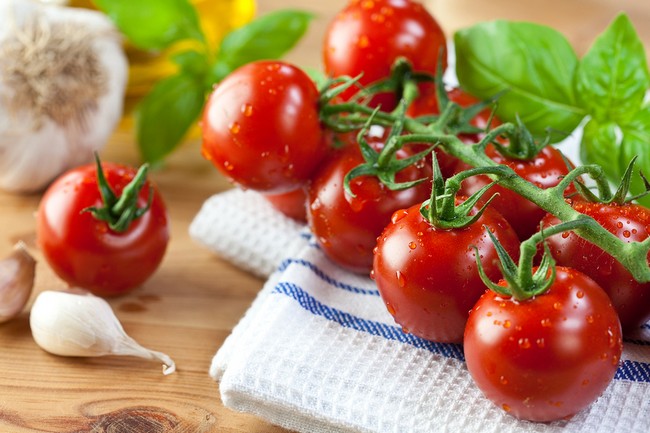
Photo credit: bigstock
7. Tomatoes
Were you planning on putting that tomato in your salad? Did you know that, right up until about the 1800’s; people believed that tomatoes were absolute poison. Some people actually made money by demonstrating their ‘power over life and death’ by eating entire tomatoes in front of crowds and living to tell about it the next day! Puts the Barnum and Bailey Circus to shame, doesn’t it?
Well, there is some truth to this story. The green, unripe fruit of tomatoes, as well as the leaves, and stems, contain small amounts of the poison alkaloid tomatine, and solanine, the same toxin found in potato leaves. These are all members of the nightshade family. The use of tomato leaves in olden days resulted in several deaths. You’ve certainly heard of a famous country dish called fried green tomatoes? Well, eaten in small amounts, its’ too low a dosage to hurt you. The leaves and stems, however, have a much more intense concentration. They can even be toxic to dogs if they should consume the plant or eat quite a few green tomatoes.
You can feel safe, then, putting that red tomato in your salad. Just don’t expect anyone to be surprised when you are still alive in the morning.
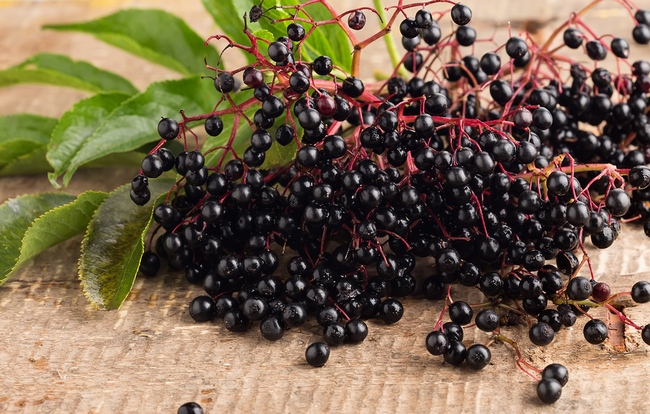
Photo credit: bigstock
8. Elderberries
Although you probably don’t eat these every day, they are very popular in wine and as medicinal teas. Now, there is no need for you to ditch that bottle of mulled wine or elderberry pie, as these berries lose their toxic properties when they are cooked. The real poison is in the plants stems and leaves, which, as you might have suspected by now, contain cyanide. Green elderberries or uncooked elderberries contain a poisonous alkaloid. Elderberries are a deciduous shrub native to Europe, western North America, and southwest Asia. This shrub produces a dark purple, almost black, type of berries that are very popular with birds as well as humans. You will find the berries are also enjoyed by elk, deer, and even sheep, so we are in good company. However, it’s important to only eat the berries when they are completely ripe. Also, absolutely no other part of the plant should be eaten, except for the flowers, as it contains that deadly toxin cyanogenic glycoside compound.
Most fatalities come from people who attempt to make ‘tea’ from the leaves of this plant, erroneously believing that if the berries and flowers are safe to eat, then the entire plant must be as well. Never drink elderberry tea unless you know how it was made. To be on the safe side, buy organic, commercially made elderberry tea as these must pass safety inspections.
You may return now to your mulled wine.
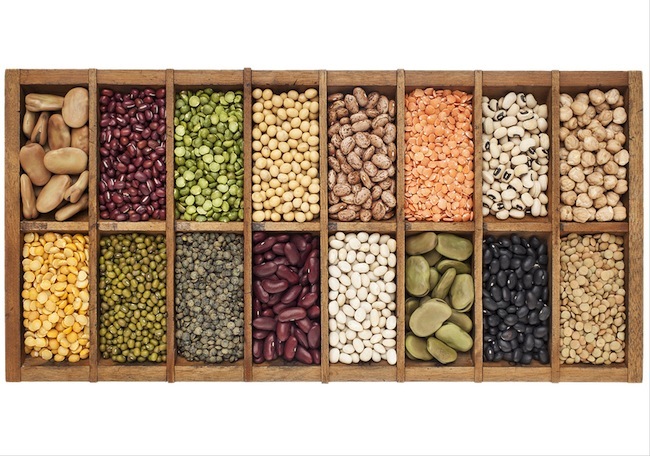
Photo credit: bigstock
9. Kidney Beans
If you thought lima beans were bad, you are really going to think twice the next time you make chili.
Although many types of beans have a toxic compound, red kidney beans have the highest concentration of all beans. You need to vigorously boil kidney beans to remove this toxin. Eating raw kidney beans will bring on symptoms within 1 to 3 hours and it only takes about 4 or 5 beans to do the trick. Symptoms start with nausea, vomiting, diarrhea, and abdominal pain.
Many cases are due to slow cookers or crock pots, as the temperatures do not reach a high enough level to destroy the glycoprotein lectin. In fact, heating kidney beans to a mere 80 degrees actually makes the toxin more potent, perhaps as much as 5 times stronger! So heating the beans without actually boiling them would make them even more deadly than eating them raw.
So go ahead and make that chili this weekend. Just be sure to boil it well, or use canned beans that are already cooked.
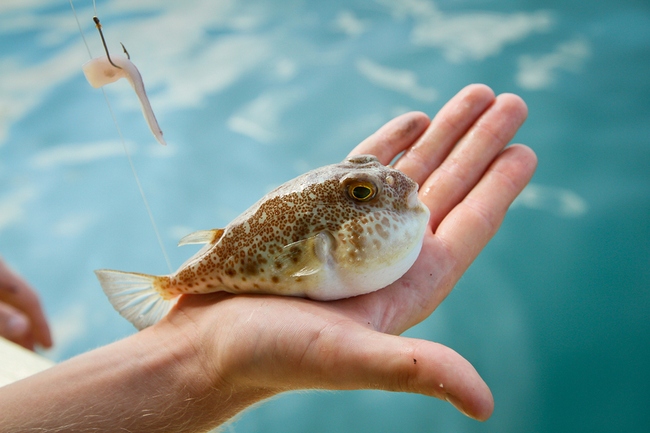
Photo credit: bigstock
10. Blowfish (Fugu)
Ok, so this isn’t something you eat every Sunday afternoon, but in some parts of the world, this is not all that uncommon, so we wanted to include it on this list. Blowfish, or fugu, is perhaps most famous for the lethal amounts of poison called tetrodotox it carries in its organs. If prepared incorrectly, this fish will paralyze the victim’s muscles, so you asphyxiate while completely conscious. There is no antidote. Nice. Well, at least you won’t have to pay for the restaurant tab.
Blowfish can be prepared successful so that, once all of its toxic organs are removed, the meat can be enjoyed. There are very strict rules in Japan and other countries that serve fugu, and chefs go through rigorous training in order to be able to serve this fish. Domestic preparation is the most common cause of death, due to improper preparation. Many people consider the liver the tastiest part of the fish, but it’s also the most poisonous. Liver has been banned from being served in Japan since 1984. It’s the most celebrated, while being the most dangerous, of all Japanese dishes.
So unless you would like to choke to death while on vacation in Japan, it might be a good idea to avoid this little fishie altogether. Eat more sushi. There’s certainly plenty of that in Japan.
(By the way, if you’re enjoying this article, you may want to subscribe to the Naturalon’s free newsletter; get breaking news alerts on GMO’s, fluoride, superfoods, natural cures and more… You privacy is protected. Unsubscribe at any time.)



































alaskaman
Oct 25, 2014 at 3:52 am
10 everyday foods? Since when is fugu or puffer fish everyday food?